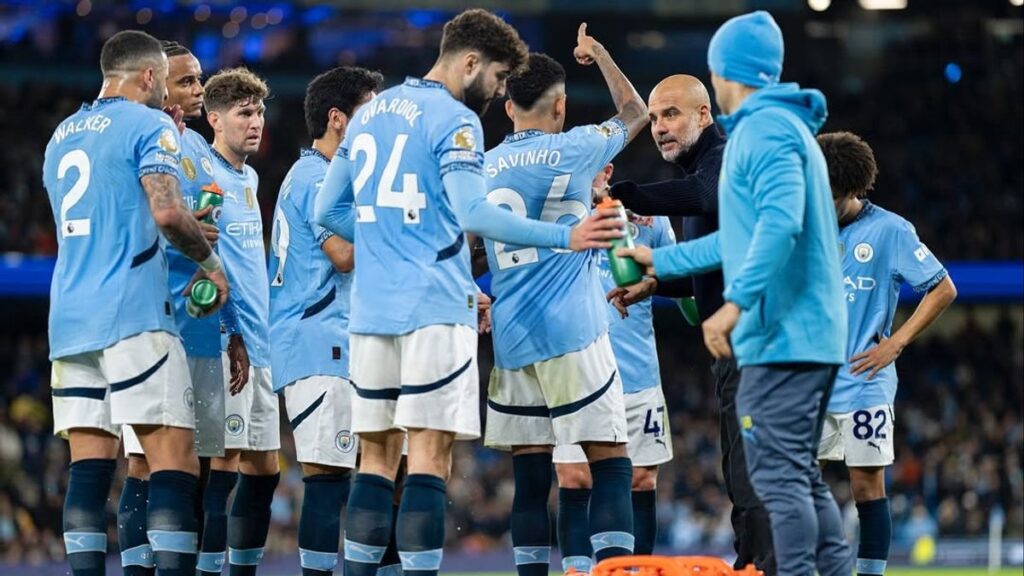
Guardiola’s Tactical Gamble: How a Stop-Gap Formation Is Delivering Results – But at What Cost?
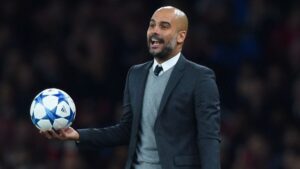
In the world of professional football, tactical choices are frequently examined for both their immediate and long-term effects. Pep Guardiola is one of the few managers who truly understands this balancing act. The Manchester City manager, who is renowned for his tactical brilliance and ongoing development, is drawing attention once more—not with a new philosophy, but rather with a stopgap formation that, surprisingly, is giving him the outcomes he needs.
Is it sustainable, though? Can a patchwork system withstand the demands of top competitions and the constant pressure to lead one of the most costly football teams? This comprehensive analysis will look at the reasons behind Guardiola’s short-term tactical changes, their current efficacy, the difficulties they present, and what this means for Manchester City’s season going forward.
Kentucky Derby Kicks Off Today 2025
The Tactical Shift: Necessity Breeds Innovation

Manchester City has had some issues this season. Guardiola has been forced into awkward situations by suspensions, injuries, and a crowded schedule. Due to the absence of important midfield and defense players, he has chosen a formation that is more a result of necessity than design. In order to cover gaps in squad depth and preserve possession dominance, the stop-gap system—typically a variation of a 3-2-4-1 or 4-1-4-1 with inverted full-backs and midfielders dropping into defense—was implemented.
Guardiola has made frequent lineup changes rather than sticking to a set lineup. In order to preserve structure, central midfielders like Bernardo Silva have shifted into wide positions, while players like John Stones have been used as hybrid defenders/midfielders. In typical Guardiola fashion, what appears chaotic from the outside is actually meticulously choreographed.
Short-Term Gains: Winning Ugly but Winning Nonetheless

The outcomes have been generally favorable in spite of the improvised setup. In both domestic and European competitions, City has kept accumulating points. Disciplined performances in the Champions League and significant victories over top-six opponents have demonstrated the system’s effectiveness, despite its transient nature.
According to statistics, Manchester City continues to have some of the most possessions in all of Europe. They keep limiting opponents’ opportunities and creating their own. However, pragmatism has occasionally overshadowed their play’s once-fluid, elegant, and dominant aesthetics. During the free-flowing 100-point campaign of 2017–18, the team’s willingness to grind out 1-0 or 2-1 victories would have seemed almost alien.
That is, Guardiola’s current configuration is effective. Even though it’s not always pretty, it’s doing the job.
Key Players: Adaptability is the Name of the Game

Guardiola’s players’ versatility is among this stopgap strategy’s most striking features. John Stones, who now alternates between central midfield and center back during games, has come to represent tactical adaptability. His capacity to decipher time and space has been essential to keeping the system in balance.
In a similar vein, players such as Manuel Akanji, Bernardo Silva, and Rodri have all been asked to do roles that are not typically associated with them. Even Erling Haaland, who is renowned for his poacher instincts, has had to adjust to a less service-heavy environment. He now frequently draws defenders to create space or drops deep to link up play.
Their support is a testament to the squad’s depth as well as Guardiola’s ability to persuade elite players to adopt discipline and flexibility over flair and freedom.
The Hidden Costs: Physical and Mental Fatigue

However, there is a cost associated with each solution. Guardiola’s dependence on this taxing system might have unintended consequences that aren’t immediately visible on the scoreboard.
High levels of focus and physical output are necessary for tactically fluid systems. Changing roles and formations frequently during a game can cause mental and physical exhaustion. As the season moves into its most taxing stage, the long-term risk of burnout looms large, even though the short-term results might still be favorable.
Furthermore, younger or less seasoned players might find it difficult to fully comprehend their roles if there is no consistent formation. Some veterans may adjust quickly, while others may find it difficult, which could result in inconsistent play or declines in form.
The Defensive Dilemma: Solidity or Sophistication?

The defense of Manchester City has always had to balance calculated risk with vulnerability. In order to keep shape when attacking transitions falter, the current formation mainly depends on the tactical discipline of players like Nathan Aké and Kyle Walker. Being caught off guard during the counterattack is more likely when there are fewer natural defenders and more improvised setups.
The cracks have begun to show in games against teams that press hard or have top attackers, even though City has maintained clean sheets against weaker opponents. This system can occasionally be ill-prepared to handle fast, dangerous transitions caused by a midfield turnover, a poorly timed overlap, or a breakdown in concentration.
Guardiola is taking a chance that the benefits of midfield dominance will exceed the dangers at the back—a traditional Guardiola conundrum.
Psychological Edge: Confidence from Results
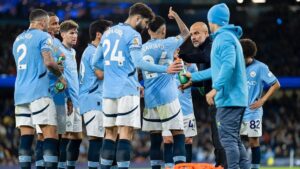
There is no denying that confidence is bred by success. The fact that the system is functioning gives the squad more faith, even if it seems fleeting. Guardiola is trusted by the players. They are confident that he can lead them through strategic trials and bring home trophies.
This confidence extends beyond the self. It throws opponents off balance as well. Guardiola throws another curveball just when opposing managers believe they have figured out City’s setup. In close title races or knockout tournaments where results are determined by slim margins, that unpredictability could prove to be a strength.
Guardiola’s History of Tactical Experimentation
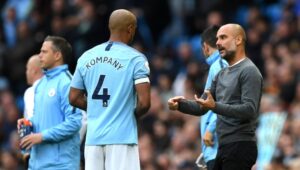
Guardiola has a history of relying on improvisation. He regularly experimented with midfield rotations and three-at-the-back schemes while he was at Bayern Munich. He is renowned for creating the “false nine” role at Barcelona and revolutionizing the role of full-backs.
While some of these experiments were unsuccessful, others transformed the sport. Guardiola is now innovating out of necessity rather than luxury. That desperation could reveal the limits of even his considerable genius, or it could lead to a new tactical breakthrough.
The Road Ahead: Can It Last?
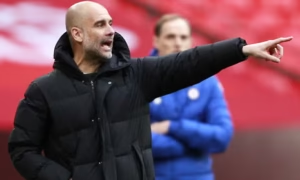
The key question is still whether this lineup can be successful for the duration of the season. Guardiola might have to switch back to more reliable strategies or bring injured players back into the starting lineup as the competition heats up and important games draw near.
However, there is a case to be made that the current system might become even more effective if it is improved and strengthened by returning players. Guardiola’s tactical development has always focused on adapting to the situation rather than implementing rigid systems.
City may return to the top of the domestic and European rankings if the stopgap formation can be transformed into a hybrid solution that offers both flexibility and consistency.
Conclusion: A Calculated Risk Worth Taking?
Guardiola’s current strategy is an intriguing example of how to manage a football team under duress. Out of necessity, his stop-gap formation has kept City afloat and occasionally even flourishing. It displays his flexibility as well as his players’ faith in the process.
However, this system’s success depends on striking a delicate balance between risk and reward, structure and improvisation, and immediate needs and long-term goals. Only time will tell if this gamble reveals deeper vulnerabilities or results in more silverware.
Guardiola’s experiment is currently successful. And that’s frequently all that matters in the unpredictable world of football.





